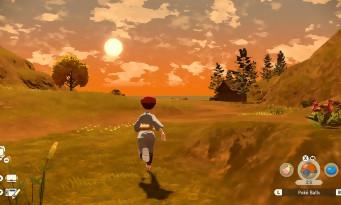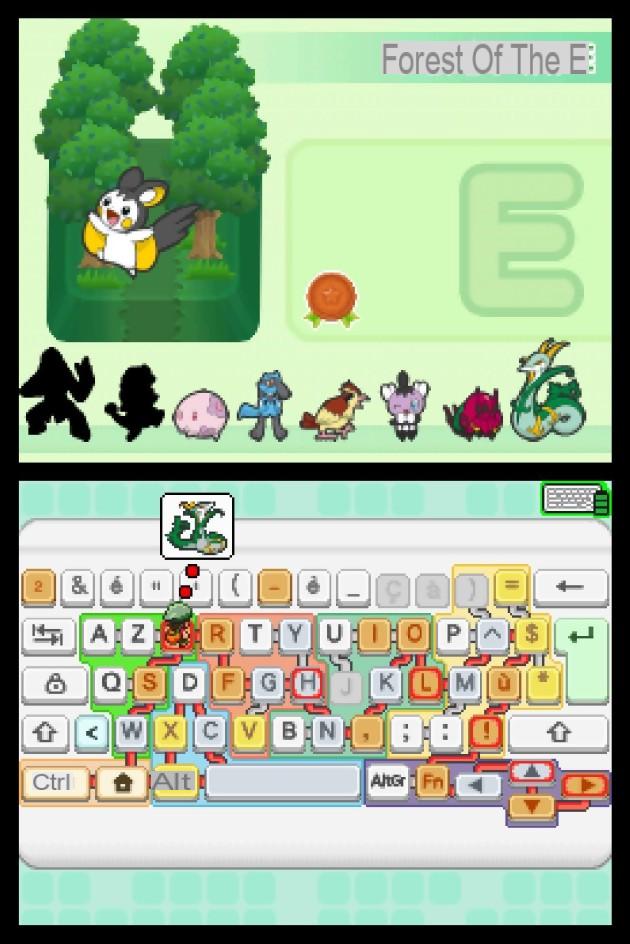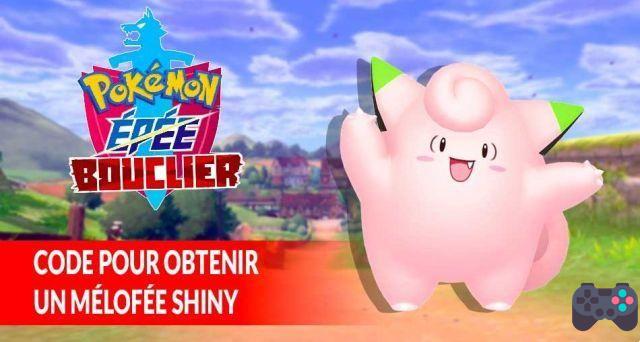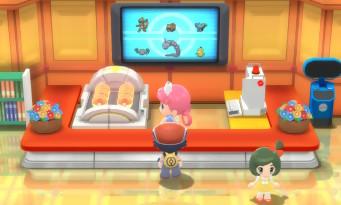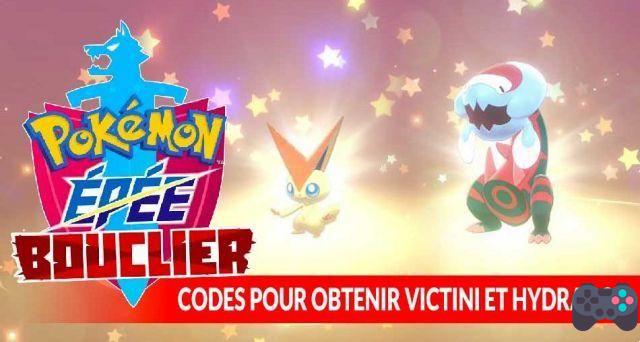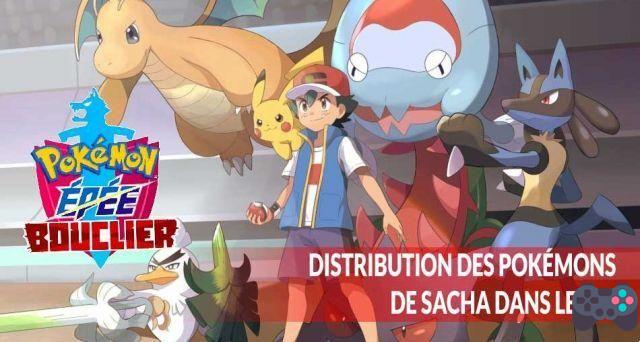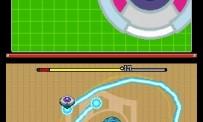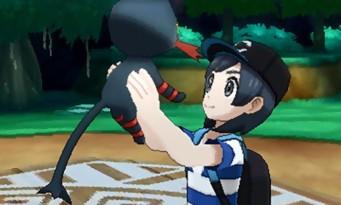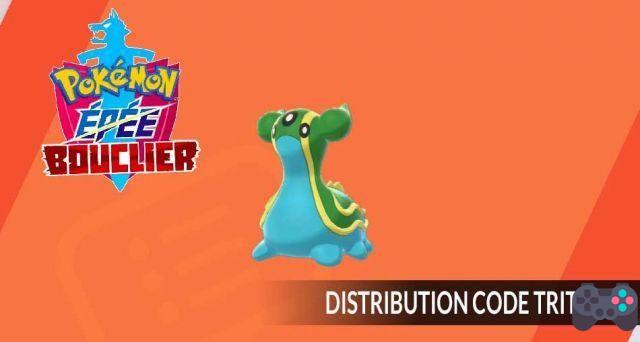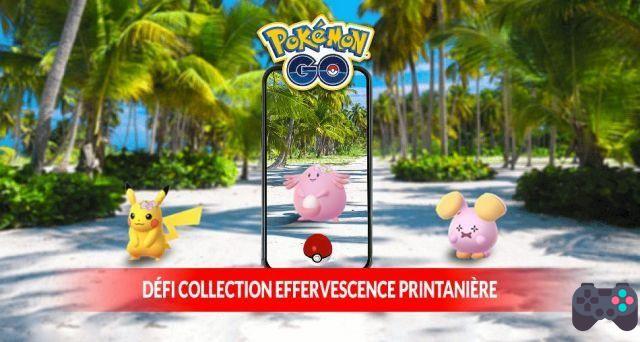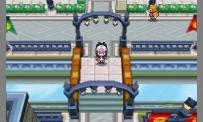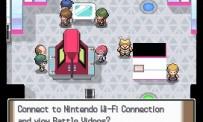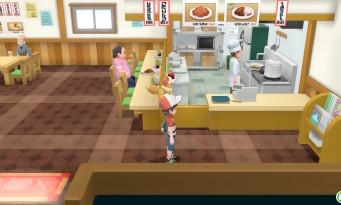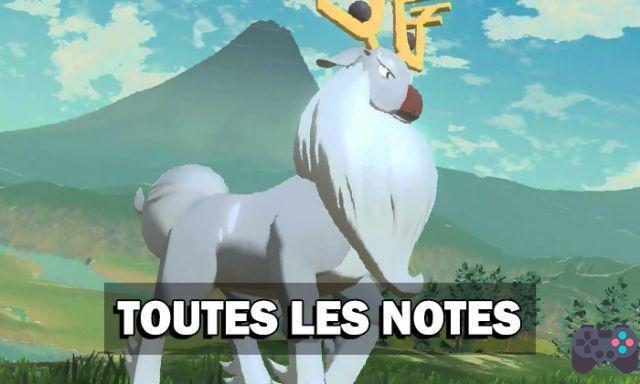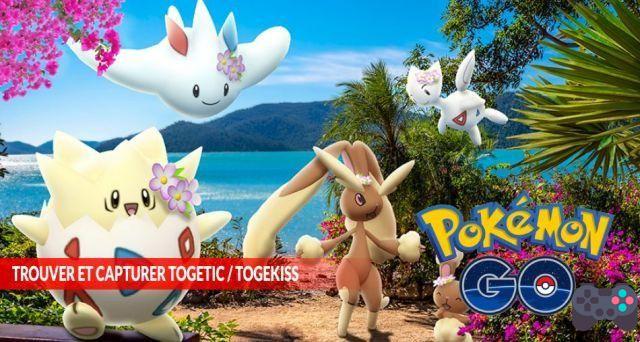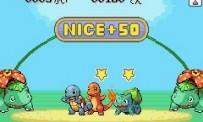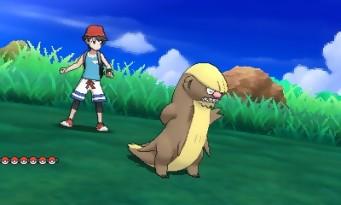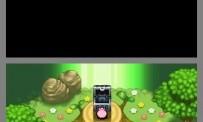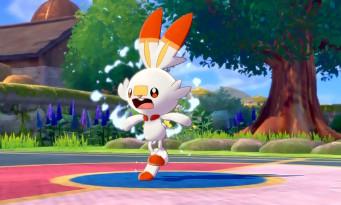 As often, Pokémon Sword / Shield offers to embody a young trainer who will follow the usual course, that is to say, tame his first pocket monster before aiming for the heights of the League. Between the two, a whole host of discoveries will allow him to forge a solid experience. In short, if you are already familiar with the series, you will not be disoriented in the least, since the main mechanics do not change one iota. The main thing is always based on the fact of having to form a team of homogeneous Pokémon, and to transform it into a real steamroller in order to fine all the other trainers in the area; all this to ultimately achieve the status of Pokémon Master. The collecting aspect remains present, with in particular a brand new Pokédex that we complete by capturing each critter crossed in the universe; and as the game allows you to explore a new region called Galar, we will be entitled to new creatures as well as many critters recycled and rekinned in a local version. In addition, we notice quite quickly that Galar is greatly inspired by the United Kingdom, whether in terms of its geographical contours, its environments, or even its architecture.
As often, Pokémon Sword / Shield offers to embody a young trainer who will follow the usual course, that is to say, tame his first pocket monster before aiming for the heights of the League. Between the two, a whole host of discoveries will allow him to forge a solid experience. In short, if you are already familiar with the series, you will not be disoriented in the least, since the main mechanics do not change one iota. The main thing is always based on the fact of having to form a team of homogeneous Pokémon, and to transform it into a real steamroller in order to fine all the other trainers in the area; all this to ultimately achieve the status of Pokémon Master. The collecting aspect remains present, with in particular a brand new Pokédex that we complete by capturing each critter crossed in the universe; and as the game allows you to explore a new region called Galar, we will be entitled to new creatures as well as many critters recycled and rekinned in a local version. In addition, we notice quite quickly that Galar is greatly inspired by the United Kingdom, whether in terms of its geographical contours, its environments, or even its architecture.Much less revolutionary than expected, Pokémon Sword / Shield remains a nice episode with a new region offering a myriad of fairly attractive environments.
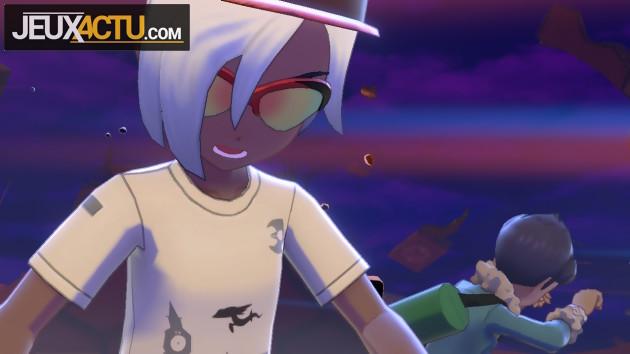 We therefore take advantage of a fairly nice set with rural villages, cities offering a subtle mix of Victorian and steampunk, and working-class neighborhoods where identical houses are stuck to each other. Moreover, even the names of the places have a strong English sounding with Paddoxton, Brasswick, Skifford, Kickenham and the capital Winscor. There are very marked differences between each district: the artistic direction does not hesitate to renew itself over time, which transforms the arrival in each new zone into a real discovery. Thus, Winscor is thus a modern megalopolis, while Ludester is an ancient city covered in snow. For Corrifey, the developers offer a magical and magical atmosphere with many colors and green plants, all bathed in a perpetual night crossed with many diffuse lights. All this remains very old school, however, since we quickly realize that our wanderings are limited to traversing rather narrow corridors and to surveying the traditional roads which connect the cities between them.
We therefore take advantage of a fairly nice set with rural villages, cities offering a subtle mix of Victorian and steampunk, and working-class neighborhoods where identical houses are stuck to each other. Moreover, even the names of the places have a strong English sounding with Paddoxton, Brasswick, Skifford, Kickenham and the capital Winscor. There are very marked differences between each district: the artistic direction does not hesitate to renew itself over time, which transforms the arrival in each new zone into a real discovery. Thus, Winscor is thus a modern megalopolis, while Ludester is an ancient city covered in snow. For Corrifey, the developers offer a magical and magical atmosphere with many colors and green plants, all bathed in a perpetual night crossed with many diffuse lights. All this remains very old school, however, since we quickly realize that our wanderings are limited to traversing rather narrow corridors and to surveying the traditional roads which connect the cities between them.
KEEP CALM AND CATCH’EM ALL
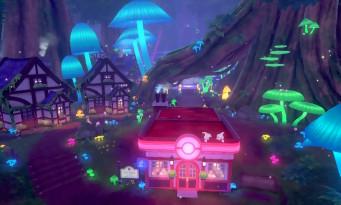 Pokémon Sword/Shield opts for a largely simplified approach which should not necessarily appeal to exploration enthusiasts. The caves and other labyrinths that had to be scrutinized so as not to miss anything are now over. Now, the roads offer a minimum of forks, with their share of tall grass and trainers to face to continue the adventure and challenge each champion. The only variations consist of small, easy-to-find paths that allow you to pick up various items to fill your backpack. Although the adventure is still just as classic, we like it quite well, and we regret that Game Freak chose to stick us with such a bad and friendly rival. Where Régis posed in a clear and competitive opposition, Nabil is content to follow the movement by raving about our slightest actions and gestures, and by showing a rather uncombatable spirit. After a few hours of play, we can't stand him anymore, he plays the role of a sickening ball. It's simple, the more time passes, the more sadistic pleasure we take in ruining him, fight after fight, without him being able to slap us a single slap.
Pokémon Sword/Shield opts for a largely simplified approach which should not necessarily appeal to exploration enthusiasts. The caves and other labyrinths that had to be scrutinized so as not to miss anything are now over. Now, the roads offer a minimum of forks, with their share of tall grass and trainers to face to continue the adventure and challenge each champion. The only variations consist of small, easy-to-find paths that allow you to pick up various items to fill your backpack. Although the adventure is still just as classic, we like it quite well, and we regret that Game Freak chose to stick us with such a bad and friendly rival. Where Régis posed in a clear and competitive opposition, Nabil is content to follow the movement by raving about our slightest actions and gestures, and by showing a rather uncombatable spirit. After a few hours of play, we can't stand him anymore, he plays the role of a sickening ball. It's simple, the more time passes, the more sadistic pleasure we take in ruining him, fight after fight, without him being able to slap us a single slap.
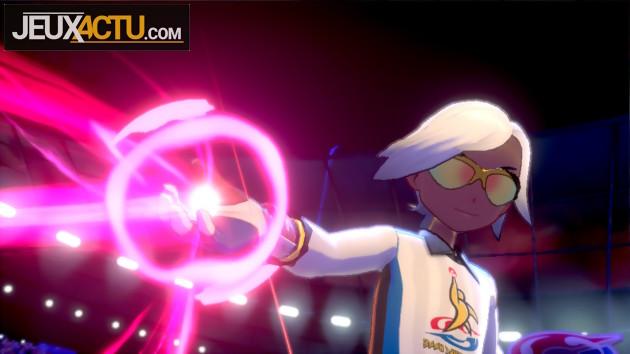 Yes, even more than before, Pokémon is a very easy game where the challenge does not really exist. We haven't lost any battles in "Story" mode, while the number of knocked out Pokémon remains in the single digits. To avoid finding yourself in trouble between two Poké-Centers, there is a way to do a little camping, which allows you to play with your team to earn a lot of XP, but also to cook up tasty dishes that will boost your PV and PP from our companions for free. The only moment offering a bit of a challenge is the arrival in the Wild Lands. Under this name hides, in reality, a vast open area where one can hunt freely and have much more freedom. This is also where we have our hands on the camera and enjoy an expanse that reminds us a lot of Hyrule Plain from The Legend of Zelda: Ocarina of Time. The Wild Lands are home to many Pokémon of very different levels, some of which will be largely out of reach on the first pass. Unfortunately, they also torment the Nintendo Switch; the display distance is mediocre. Whether it's the monsters or the trainers, they then start clipping atrociously, which is quite annoying, especially when moving quickly on a bicycle.
Yes, even more than before, Pokémon is a very easy game where the challenge does not really exist. We haven't lost any battles in "Story" mode, while the number of knocked out Pokémon remains in the single digits. To avoid finding yourself in trouble between two Poké-Centers, there is a way to do a little camping, which allows you to play with your team to earn a lot of XP, but also to cook up tasty dishes that will boost your PV and PP from our companions for free. The only moment offering a bit of a challenge is the arrival in the Wild Lands. Under this name hides, in reality, a vast open area where one can hunt freely and have much more freedom. This is also where we have our hands on the camera and enjoy an expanse that reminds us a lot of Hyrule Plain from The Legend of Zelda: Ocarina of Time. The Wild Lands are home to many Pokémon of very different levels, some of which will be largely out of reach on the first pass. Unfortunately, they also torment the Nintendo Switch; the display distance is mediocre. Whether it's the monsters or the trainers, they then start clipping atrociously, which is quite annoying, especially when moving quickly on a bicycle.Moreover, the end credits scroll once the supreme title in hand, while the history of the Legendary Pokémon is only halfway through. The rest of the adventure can therefore be enjoyed as a kind of bonus to spice up the end-game and add a few hours of fun.
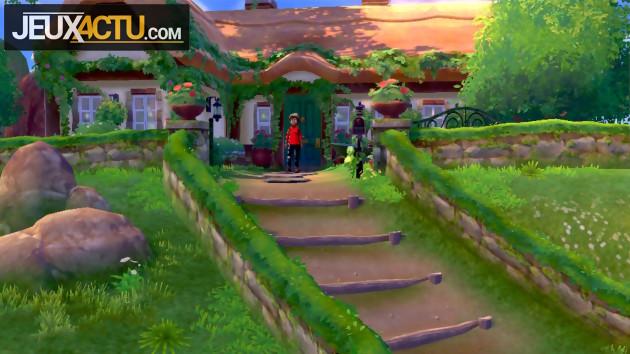 There are also wells that hold Dynamax Pokémon. More concretely, they are creatures that have been influenced by a fragment of a star, and whose size and power have been multiplied. These clashes are similar to raids, playable with 4 players online or solo using AI-controlled characters - in this case, they are confined to a support role. If the name Dynamax is in itself a novelty, in fact, it is a bit of a mix between the Mega-Evolutions and the Force Z that players have seen in previous episodes. Some differences exist, however, since all your Pokémon will have the possibility of "dynamaxing", but only for three turns and in certain very specific places such as raids and official arenas. If this system is rather interesting when playing against a player in challenge, it loses all its interest during a match against the AI, the latter systematically using it on the last Pokémon of its team. Inevitably, we therefore know when to use this joker, and on which Pokémon to use it. The choice of the beast remains decisive, because the Dynamax changes the list of attacks of our fighter by offering an attack by type of Pokémon. The system is particularly effective on monsters capable of stacking different types, such as Leviator which can combine flight, water, ice and darkness.
There are also wells that hold Dynamax Pokémon. More concretely, they are creatures that have been influenced by a fragment of a star, and whose size and power have been multiplied. These clashes are similar to raids, playable with 4 players online or solo using AI-controlled characters - in this case, they are confined to a support role. If the name Dynamax is in itself a novelty, in fact, it is a bit of a mix between the Mega-Evolutions and the Force Z that players have seen in previous episodes. Some differences exist, however, since all your Pokémon will have the possibility of "dynamaxing", but only for three turns and in certain very specific places such as raids and official arenas. If this system is rather interesting when playing against a player in challenge, it loses all its interest during a match against the AI, the latter systematically using it on the last Pokémon of its team. Inevitably, we therefore know when to use this joker, and on which Pokémon to use it. The choice of the beast remains decisive, because the Dynamax changes the list of attacks of our fighter by offering an attack by type of Pokémon. The system is particularly effective on monsters capable of stacking different types, such as Leviator which can combine flight, water, ice and darkness.
The Gigamax phenomenon will also be at the heart of the plot of this new part of the series, with a rather well-written scenario that remains desperately underused. In fact, the player is content to follow the objectives and have the story served to him, without really having the impression of taking part in it.
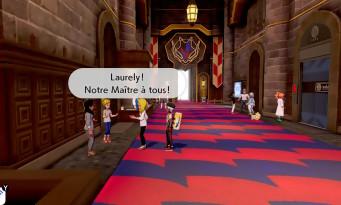 Better, some Pokémon can even “gigamax”, a kind of even more powerful form but this time reserved for certain Pokémon. Once "gigamaxed", our creature sees its attacks change once again. The Gigamax phenomenon will also be at the heart of the plot of this new part of the series, with a rather well-written scenario that remains desperately underused. In fact, the player is content to follow the objectives and have the story served to him, without really having the impression of taking part in it. It's a shame, especially since the whole thing remains particularly heterogeneous with the quest for champion badges and the title of master, to the point that we really have the impression that two teams of developers have produced each part of the game without really to consult. Moreover, the end credits scroll once the supreme title in hand, while the history of the Legendary Pokémon is only halfway through. The rest of the adventure is therefore enjoyed as a kind of bonus to spice up the end-game and adds a few hours of fun, allowing you to get your hands on the Legendary Pokémon corresponding to your version of the game.
Better, some Pokémon can even “gigamax”, a kind of even more powerful form but this time reserved for certain Pokémon. Once "gigamaxed", our creature sees its attacks change once again. The Gigamax phenomenon will also be at the heart of the plot of this new part of the series, with a rather well-written scenario that remains desperately underused. In fact, the player is content to follow the objectives and have the story served to him, without really having the impression of taking part in it. It's a shame, especially since the whole thing remains particularly heterogeneous with the quest for champion badges and the title of master, to the point that we really have the impression that two teams of developers have produced each part of the game without really to consult. Moreover, the end credits scroll once the supreme title in hand, while the history of the Legendary Pokémon is only halfway through. The rest of the adventure is therefore enjoyed as a kind of bonus to spice up the end-game and adds a few hours of fun, allowing you to get your hands on the Legendary Pokémon corresponding to your version of the game.CLIPPING, WHAT A GALAR
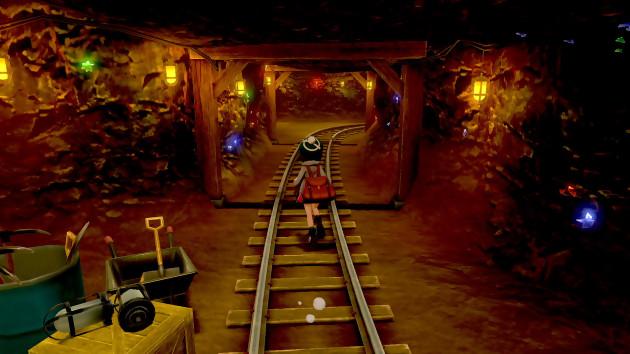 Fortunately, online features are available to extend the experience if you're not too keen on completing your Pokédex, provided you're a Nintendo Switch Online subscriber of course. With its fairly low difficulty, Pokémon Sword / Shield loops in about thirty hours taking its time, and a little more for novices. No stress if the game is your gateway to the Pokémon universe, since many aids are available, including an efficiency score assigned to each attack of each monster on your team depending on your opponent. In summary, even if you are completely lost between the different types, the game will still reach out to you. We never face the slightest challenge, which ends up boring in the long run. History also repeats itself in terms of pecuniary resources, since if the old games forced us to be careful with our bank account, the latest Game Freak game makes us richer than Donald Trump halfway through the game, the trainers dropping a astronomical bonus to each of our victories.
Fortunately, online features are available to extend the experience if you're not too keen on completing your Pokédex, provided you're a Nintendo Switch Online subscriber of course. With its fairly low difficulty, Pokémon Sword / Shield loops in about thirty hours taking its time, and a little more for novices. No stress if the game is your gateway to the Pokémon universe, since many aids are available, including an efficiency score assigned to each attack of each monster on your team depending on your opponent. In summary, even if you are completely lost between the different types, the game will still reach out to you. We never face the slightest challenge, which ends up boring in the long run. History also repeats itself in terms of pecuniary resources, since if the old games forced us to be careful with our bank account, the latest Game Freak game makes us richer than Donald Trump halfway through the game, the trainers dropping a astronomical bonus to each of our victories.




